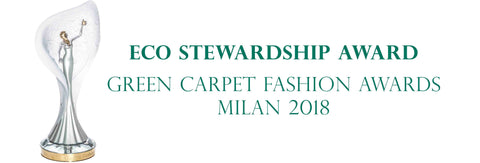
Environmental Management
Bangor has a spectacular environment with 5,100 ha of native forests and grassland, 2,100 ha permanent forest reserves and 35 km of coastline. The property is home to a large number of animals and birds, including some of Tasmania's most precious and iconic species. Marsupial residents include Tasmanian devils, wallabies, bettongs, wombats and quolls. There are over 120 bird species including wedge-tailed eagles, sea eagles and swift parrots. The protection and sustainability of this special environment forms the core of the management philosophy and practice here at Bangor.
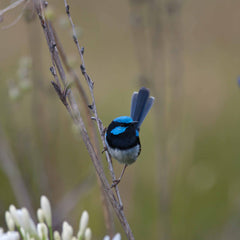


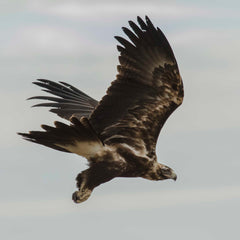
Bangor is carbon positive
In 2022 we worked with some of Australia's leading carbon accounting groups to look closely at our carbon status. The study assessed all of the carbon emissions from our vineyard, winery, restaurant, and farming, and at the carbon storage in Bangor’s extensive areas of native forest.
When the numbers came in, the carbon positive outcome was clear. Each year, the equivalent of 1,500 tonnes of CO2 is stored at Bangor, equivalent to the emissions from 100 households!
2,000 tonnes of CO2 equivalents are emitted each year from all of Bangor's operations, while our 5,000 hectares of native forests lock away the equivalent of 3,500 tonnes of CO2 each year, delivering a net storage of 1,500 tonnes. This is in addition to the 220,000 tonnes of carbon currently stored in Bangor’s forests.
It’s fantastic to demonstrate that as well as looking after our wildlife and plants, we are reducing the amount of CO2 in the atmosphere by adding so much carbon into long-term storage. It really showcases the way that wine, tourism, agriculture, and nature conservation can be managed together for incredible environmental outcomes.
Farming and the environment
Bangor is a working farm, and we have a long history of combining agricultural production with careful environmental management. The most intensive production occurs on paddocks with introduced pastures, where the addition of fertiliser combines with careful grazing managementto maximise returns in a sustainable manner.
Native vegetation is managed for a balance of production and conservation. Much of the native grassland and bush is lightly grazed by merino sheep in a manner which retains the health and diversity of native grasses, herbs, shrubs and trees. Other parts of the property, such as the Swan Lagoon wetland and much of the coastline, are managed entirely for conservation.
Formal reserves
Over 2,100 hectares of Bangor is formally protected in perpetual conservation reserves. These areas include some of the most valuable vegetation types such as grassy blue gum (Eucalyptus globulus) and black gum (E. Ovata) forests, the spring and summer home of the swift parrot.
Vegetation
Of the 6,000 hectare property, over 5,100 ha is covered in native vegetation, from dense forests, to open woodlands and grasslands, as well as coastal vegetation.
Shady gullies are dominated by dense, wet sclerophyll forest, the dominant trees being either stringy barks (Eucalyptus obliqua), blue gums (E. globulus) or black gums (E. ovata). The majority of Bangor's native forest however is drier, more open sclerophyll forest, which depending on aspect, slope and soil type is dominated by eucalypts such as blue gum, white peppermint (E. pulchella), white gum (E. viminalis), brown peppermint (E. amygdalina) and black gum.
Along the sheltered shoreline surrounding Blackman Bay, as well as the swan lagoon wetland, succulent herbs thrive in the saline conditions. The exposed ocean coastline is home to the hardy she-oak (Allocasuarina verticillata), which clings to the rocky cliff-tops and faces.
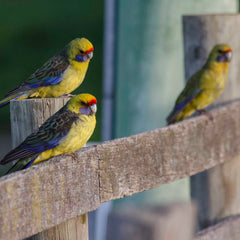
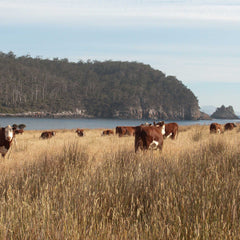


Geology and landforms
Geological events over millennia have shaped the landscape of Bangor. The majority of the property sits atop rocky dolerite hills and gullies, a common landform across south-eastern Tasmania. The dolerite is most spectacularly evident at Cape Fredrick Hendrick, where the towering cliffs rise 150 metres vertically from the sea.
The low lying Blackman Plains in the east were once part of an ancient seafloor, but now make up some of the most productive and fertile parts of the farm. Over the aeons, wind has moved sand around the landscape, resulting in a mosaic of sandy and heavy clay soils across the plains.
Mudstones and sandstones, formed by the deposition of marine sediments millions of years ago, are also present at Bangor. The fossils of shells and small animals which lived in these shallow seas are evident in the broken rocks.
